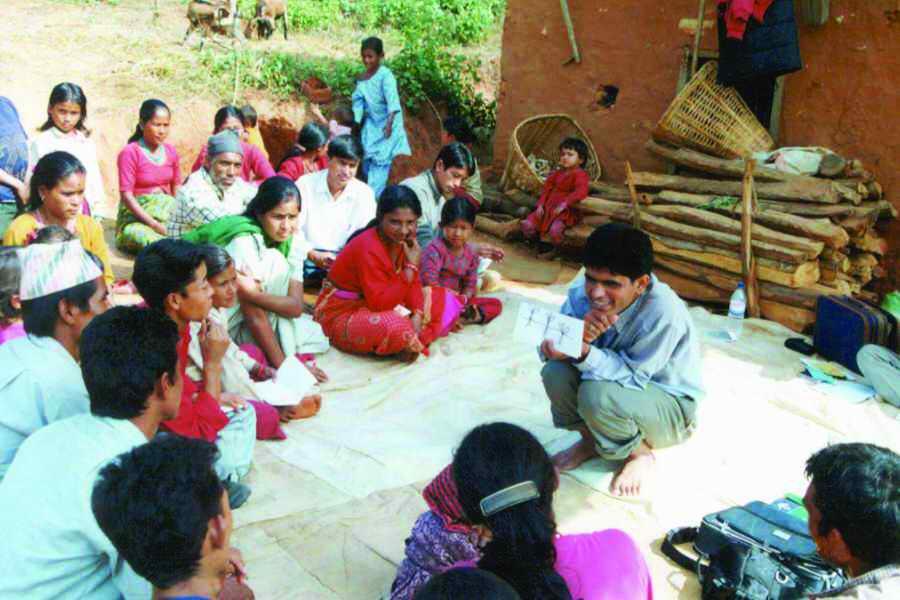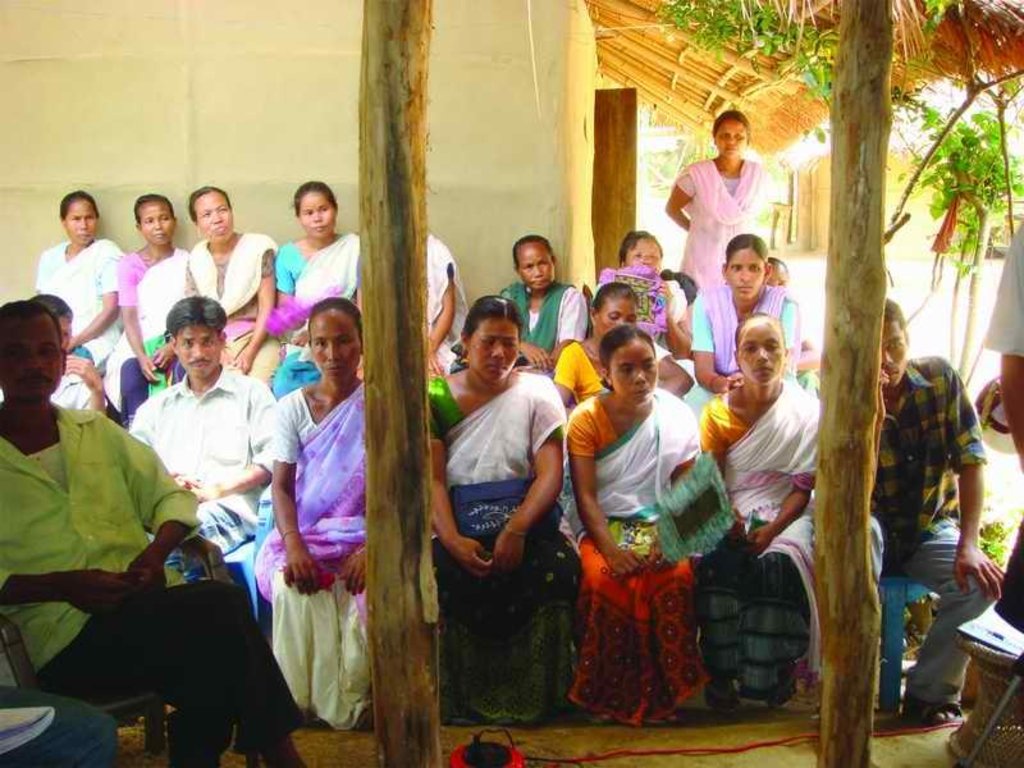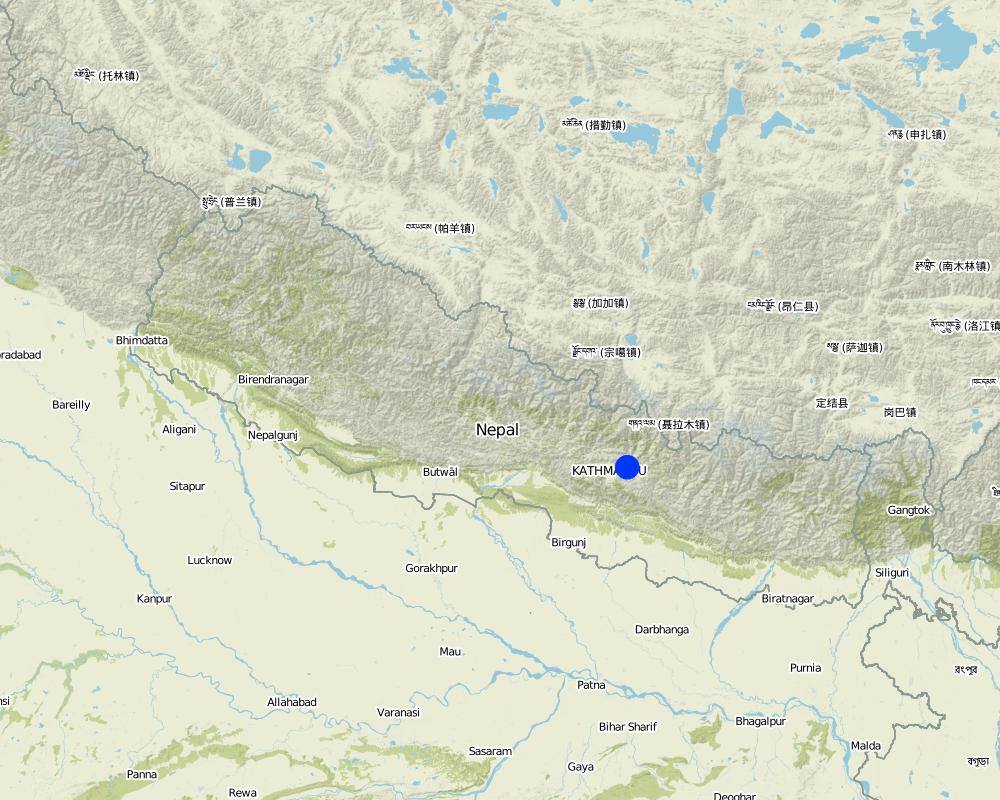Improving terraces with farmers [Непал]
- Создание:
- Обновить:
- Составитель: Madhav Dhakal
- Редактор: –
- Рецензент: Laura Ebneter
Kisansangai gara sudhar (Nepali)
approaches_2549 - Непал
Просмотреть разделы
Развернуть все Свернуть все1. Общая информация
1.2 Контактные данные специалистов и организаций, участвующих в описании и оценке Подхода
Специалист по УЗП:
Название организации (-ий), содействовавших документированию/оценке Подхода (если применимо)
ICIMOD International Centre for Integrated Mountain Development (ICIMOD) - Непал1.3 Условия, регламентирующие использование собранных ВОКАТ данных
Составитель и ответственный/-ые специалист(-ы) согласны с условиями, регламентирующими использование собранных ВОКАТ данных:
Да
2. Описание Подхода УЗП
2.1 Краткое описание Подхода
Participatory action research with multiple stakeholders for the demonstration and extension of improved rainfed hill terraces in Nepal
2.2 Подробное описание Подхода
Подробное описание Подхода:
The traditional farming practices employed on steep sloping land in Kubinde village in Nepal's midhills led to soil and water erosion and low crop and fodder yields. The People and Resource Dynamics in Mountain Watersheds of the Hindu Kush- Himalayas Project (PARDYP) started work in 2001, with a small group of farmers from this village (who were also members of the local forest user group) and the Department of Soil Conservation and Watershed Management to identify and test an integrated approach for addressing these constraints. The approach taken was an improved hill terrace for rainfed conditions consisting of structural and vegetative measures. The aim was to demonstrate and test the technologies' potential for overcoming constraints related to farming sloping agricultural land. The specific objectives were, in association with the local farmers, to design a technology that solved soi erosion problems on sloping agricultural lands whilst at the same time increasing the land's nutrient conservation and production capacity. The local line agency office of the Department of Soil Conservation and Watershed Management was involved in developing the technology to make use of their experiences and to come up with a validated technology that the department could use in its own programmes.
Before implementing the terrace improvement work in Kubinde village, a terrace improvement committee was formed made up of local farmers. The awareness activities began in January 2001. Committee members were trained on subwatershed management and were taken to the International Centre for Integrated Mountain Development’s (ICIMOD) Demonstration and Training Centre at Godavari and another ICIMOD site to show them potential soil and water conservation technologies including improved terraces. After the technologies were implemented, a number of farmer exchange, interaction and monitoring programmes were held to assess the technology and to promote it. Indicators were developed for monitoring the activity.
About half of the costs were covered by the participating farmers and the rest by PARDYP. The other incentives were training and extension, allowances for participants, national expert honoraria, and training material such as audio-visual facilities. These were all provided by PARDYP with the help of the line agency.
2.3 Фотографии, иллюстрирующие Подход
2.5 Страна/ регион/ место, где применялся Подход
Страна:
Непал
Более точная привязка места:
kavre Palanchok/ Kubinde village, Jhikhu Khola watershed
Map
×2.6 Даты начала и окончания реализации Подхода
Год окончания (Если Подход больше не применяется):
2005
2.7 Тип Подхода
- в рамках проекта/ программы
2.8 Каковы цели/ задачи Подхода
Local farmers collectively solving problems by identifying and using the most appropriate local solutions. Local farmers designing, testing, and disseminating alternative technologies adapted to local conditions. Strengthening joint learning by farmers and development actors
The SLM Approach addressed the following problems: Weak institutional collaboration for addressing 1) poor soil fertility and land productivity; 2) soil and nutrient loss and excessive water runoff from sloping agricultural land; and 3) fodder scarcity. Lack of on-farm research for developing technologies that attend to farmers' needs.
2.9 Условия содействующие применению Технологии/ Технологий в рамках Подхода или затрудняющие его
Наличие/ доступность финансовых ресурсов и услуг
- затрудняют
Government incentives are lacking
Treatment through the SLM Approach: The technology is cost effective.
Институциональные условия
- затрудняют
Lack of coordination among land users
Treatment through the SLM Approach: Terrace improvementuser group formed
Нормативно-правовая база (землевладение, права на земле- и водопользование)
- содействуют
The existing land ownership, land use rights / water rights greatly helped the approach implementation: Because of private land ownership, there were no conflicts and hence the technology for deissmeination was well maintained.
Осведомленность в области УЗП, доступность технической поддержки
- затрудняют
It is not a priority area of line agencies
Treatment through the SLM Approach: The appraoch relies on farmer adoption
другие
- затрудняют
lack of awareness
Treatment through the SLM Approach: Trainings , discussions and field visits
3. Участие и распределение ролей заинтересованных сторон
3.1 Заинтересованные стороны, участвующие в реализации Подхода и их роли
- местные землепользователи/ местные сообщества
Men and women land users worked equally
- эксперты по УЗП/ сельскому хозяйству
- учителя/ преподаватели/ школьники / студенты
- общественные организации
- местные власти
- государственные власти (отвечающие за планирование или принятие решений)
- health volunteers
3.2 Участие местных землепользователей/ местных сообществ на разных стадиях реализации Подхода
| Участие местных землепользователей/ местных сообществ | Перечислите участников и опишите их вовлеченность | |
|---|---|---|
| инициирование/ мотивация | пассивное | Group discussion; organised with local forest user group; selection of members for training and tours (12 men and 11 women); formation of terrace improvement committee. |
| планирование | интерактивное | group discussion; survey , site selection , fodder / grass species selection |
| выполнение | самоорганизация | Terracing activities: measurement, soil excavation, and retaining wall construction |
| мониторинг/ оценка | интерактивное | Done in a participatory way involving individual farmers, project staff, and Department of Soil Conservation staff |
| Research | пассивное | Assessing performance of planted grasses and advantages and disadvantages of technology |
3.3 Схема реализации (если имеется)
3.4 Принятие решений по выбору Технологии/ Технологий УЗП
Укажите, кто принимал решение по выбору применяемой Технологии/ Технологий:
- преимущественно специалисты по УЗП после консультаций с землепользователями
Поясните:
The package was initially offered by researchers and later modified and implemented by land users.
Decisions on the method of implementing the SLM Technology were made by mainly by land users supported by SLM specialists. The landusers are more familiar with their land's capacity and charcteristics.
4. Техническая поддержка, повышение компетенций и управление знаниями
4.1 Повышение компетенций/ обучение
Проводилось ли обучение землепользователей/ других заинтересованных лиц?
Да
Укажите, кто проходил обучение:
- землепользователи
- extensionists/trainers, teachers, school children/students, politicians/decision makers, Health volu
Тип обучения:
- обмен опытом между фермерами
- опытные участки
- курсы
Тип обучения:
- Audio vidual learning
Рассматриваемые темы:
Importance of Soil and Water conservation in local level, concept of sub watershed management, activities in other parts of a country regarding SLM, etc.
4.2 Консультационные услуги
Есть ли у землепользователей возможность получать консультации?
Да
Описание/ комментарий:
Name of method used for advisory service: Demnstration/extension of improved terrace technology;
Key elements: Participatory Action Research, Trainigs and Farmer to Farmer visits, Particpatory monitoring and evaluation; 1) Advisory service was carried out through: projects own extension structure and agents, government's existing extension system; Extension staff: project employees, govt. staff and farmers. 2) Target groups for extension: land users, technicians/SLM specialists; Activities: Farmer to farmer exchange, demonstration, trainings; Invited to trainigs, field visits
Advisory service is quite adequate to ensure the continuation of land conservation activities; Various extension service agencies have secured funding for SLM programmes.
4.3 Институциональная (организационная) поддержка
В ходе реализации Подхода были ли организованы новые институциональные структуры или поддержаны уже существующие?
- нет
4.4 Мониторинг и оценка
Являются ли мониторинг и оценка частью Подхода?
Да
Комментарии:
bio-physical aspects were ad hoc monitored through observations; indicators: plant heigth, biomass production, usefulness of grass/fodder species
technical aspects were ad hoc monitored by project staff through observations; indicators: views about technology
socio-cultural aspects were ad hoc monitored through observations; indicators: species selection, change of agricultural practices
economic / production aspects were ad hoc monitored through observations; indicators: changes in crop yields and patterns and the value of the land
area treated aspects were ad hoc monitored through observations; indicators: survey, on-site verifications
land users involved aspects were ad hoc monitored through observations; indicators: survey, number of land users applying for SWC
management of Approach aspects were ad hoc monitored through observations; indicators: maintenance of terraces and hedgerows
There were few changes in the Approach as a result of monitoring and evaluation: New ideas have been generated but strategies to implement them are yet to be in place.
There were few changes in the Technology as a result of monitoring and evaluation: New varieties of grass, fruit and fodder species have been introduced
4.5 Научные исследования
Были ли научные исследования частью Подхода?
Да
Укажите темы исследований:
- социология
- экология
- технология
Напишите подробнее и назовите тех, кто выполнял исследования:
Sociology: Looking at scaling up process; Ecology: Looking at the impacts of the technology at subwatershed level; Technology: development process.
Research was carried out on-farm
5. Финансирование и внешняя материальная поддержка
5.1 Годовой бюджет мероприятий по УЗП в рамках Подхода
Если точный годовой бюжет неизвестен, укажите примерный диапазон затрат:
- < 2000
Комментарий (например, основные источники финансирования/ ключевые доноры):
Approach costs were met by the following donors: national non-government (SDC, IDRC, ICIMOD): 65.0%; local community / land user(s) (Terrace improvement committee): 35.0%
5.2 Финансирование и внешняя материальная поддержка, предоставляемая землепользователям
Предоставлялась ли землепользователям финансовая/ материальная поддержка для применения Технологии /Технологий?
Да
5.3 Субсидии на отдельные затраты (включая оплату труда)
- сельскохозяйственные
| Укажите, какие ресурсы были субсидированы | В какой степени | Опишите субсидии подробнее |
|---|---|---|
| семена | профинансированы полностью | |
Если труд землепользователя был существенным вкладом, укажите, был ли этот вклад:
- за денежное вознаграждение
Комментарии:
About 50% of total labour costs were met by land users.
5.4 Кредитование
Предоставлялись ли в рамках Подхода кредиты на мероприятия УЗП?
Нет
6. Анализ влияния и заключительные положения
6.1 Влияние Подхода
Сумел ли Подход помочь землепользователям внедрить и поддерживать технологии УЗП?
- Нет
- Да, немного
- Да, умеренно
- Да, существенно
Area expanded , about 100 percent of previously improved terraces was expanded. New variety of grass/ fodder species has been adopted..
Did other land users / projects adopt the Approach?
- Нет
- Да, немного
- Да, умеренно
- Да, существенно
The project's aim was not to promote the approach but the technology. However, similar appraches are followed by other programs as well from before; such as the District Soil Conservation Offices.
6.2 Основные причины, побуждающие землепользователей внедрять УЗП
- рост продуктивности
increased production (grain and biomass) due to moisture and nutrient conervation
- рост прибыли (доходности) и рентабельности
Increased land prize
- снижение объёма работ
fodder/ grass availability ( near to house)
- улучшение эстетической привлекательности
greenary throughout the season due to fodder and grass species.
- environmental consciousness, moral, health
less soil erosion from the land
6.3 Долгосрочная устойчивость мероприятий в рамках Подхода
Могут ли землепользователи самостоятельно (без внешней поддержки) продолжать применение того, что было реализовано в рамках Подхода?
- да
Если да, опишите как:
More than 60% of the total improved terraces in Kubinde village were built by the land users themselves. Widespread rapid adoption did not happen in other villages due to financial and labour limitations. Land users of Kubinde village continue to maintain the improved terraces.
6.4 Сильные стороны/ преимущества Подхода
| Сильные стороны/ преимущества/ возможности по мнению землепользователей |
|---|
| Technical knowledge and confidence increased from the training and field visits, interactions, and experience sharing (How to sustain/ enhance this strength: Such activities should be continued by incorporating other new ideas) |
| The approach led to the development of a team spirit among farmers (How to sustain/ enhance this strength: As above) |
| Сильные стороны/ преимущества/ возможности по мнению составителя или других ключевых специалистов |
|---|
| The approach is based on building the capacity of farmers (both men and women) by involving multiple stakeholders in the development and adoption of the technology. (How to sustain/ enhance this strength: Approach should be to strengthen land users' involvement in SWC activities) |
6.5 Слабые стороны/ недостатки Подхода и пути их преодоления
| Слабые стороны/ недостатки/ риски по мнению составителя или ответственных специалистов | Возможные пути их преодоления/снижения? |
|---|---|
| Due to the conflict, which was on-going at the time, follow-up after a year of implementing technology was not possible and the monitoring was not done. This resulted in the adoption of the technology by other farmers not being carried out properly with, for example, farmers not maintaining the hedgerows as recommended. Also, the new terraces were not as good as they should have been. | The technical experts need to visit the sites and identify gaps and encourage farmers to 'fill them'. For example, the benefit of hedgerow management needs to be demonstrated. |
7. Справочные материалы и ссылки
7.1 Методы сбора/источники информации
- выезды на места, полевые обследования
- опросы землепользователей
7.2 Ссылки на опубликованные материалы
Название, автор, год публикации, ISBN:
Mathema, P. (2003) Watershed Management in South Asia. Kathmandu: Government of Nepal, Department of Soil Conservation and Watershed Management
Где опубликовано? Стоимость?
Department of soil conservation, Nepal
Ссылки и модули
Развернуть все Свернуть всеСсылки
Нет ссылок
Модули
Нет модулей






